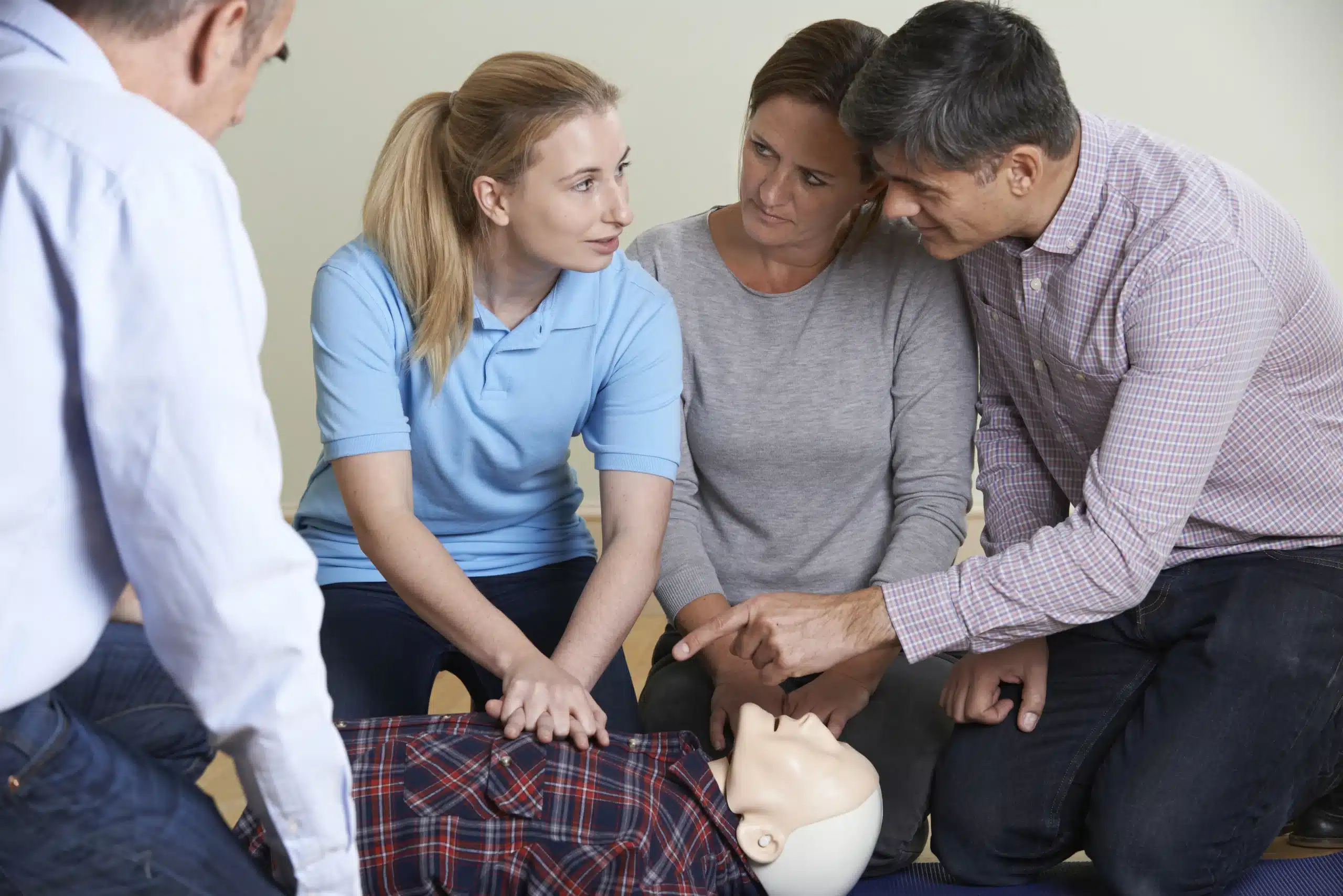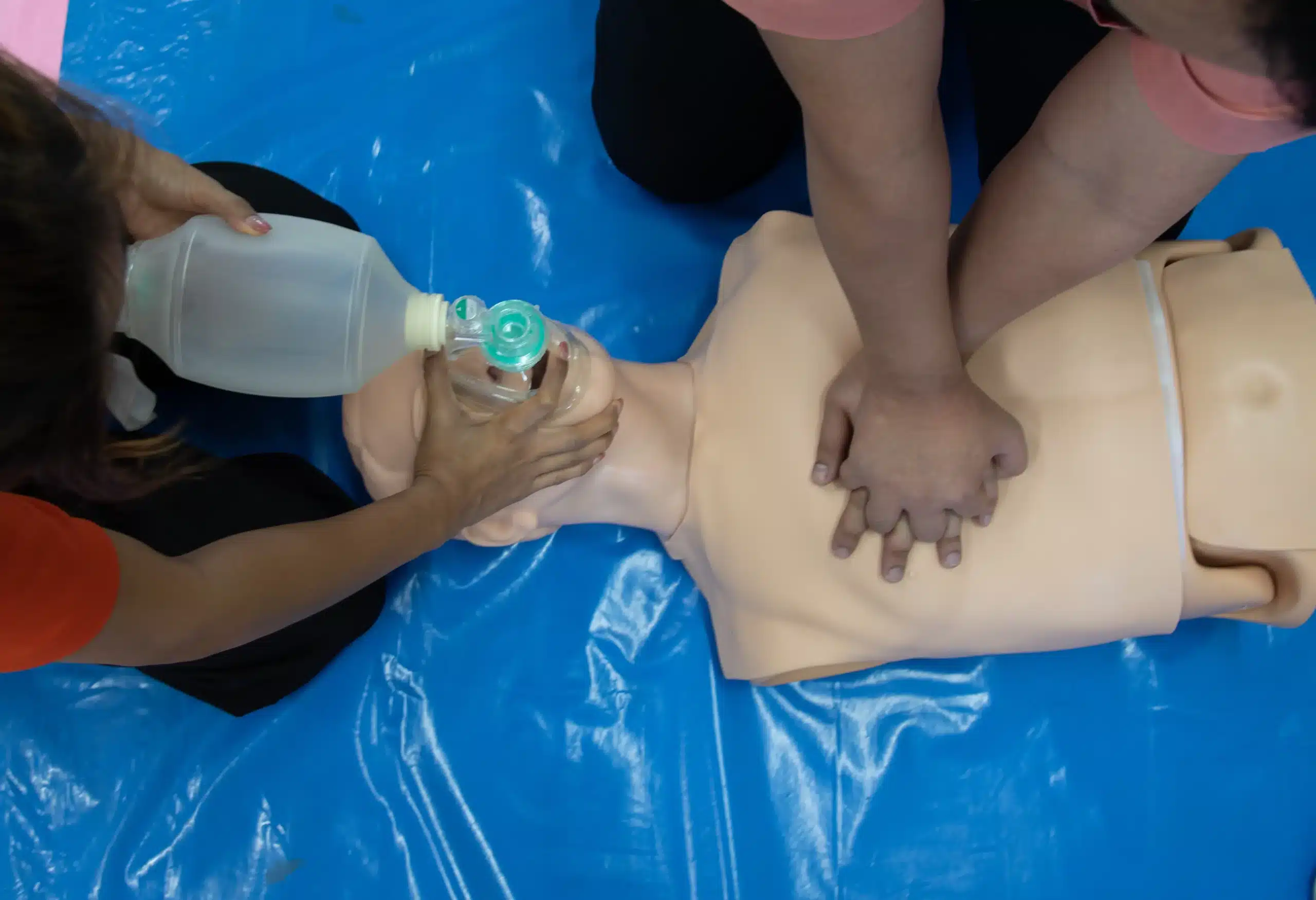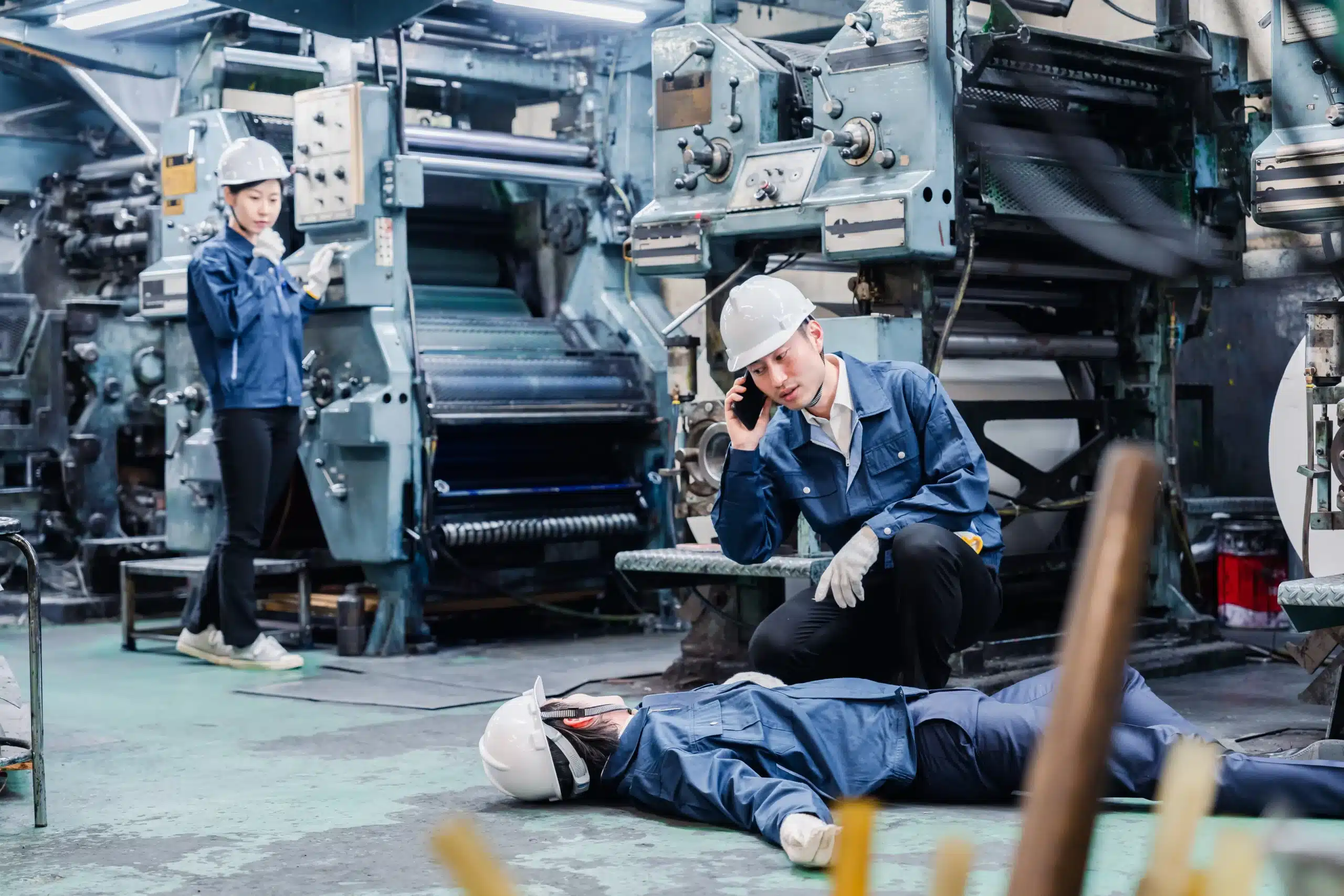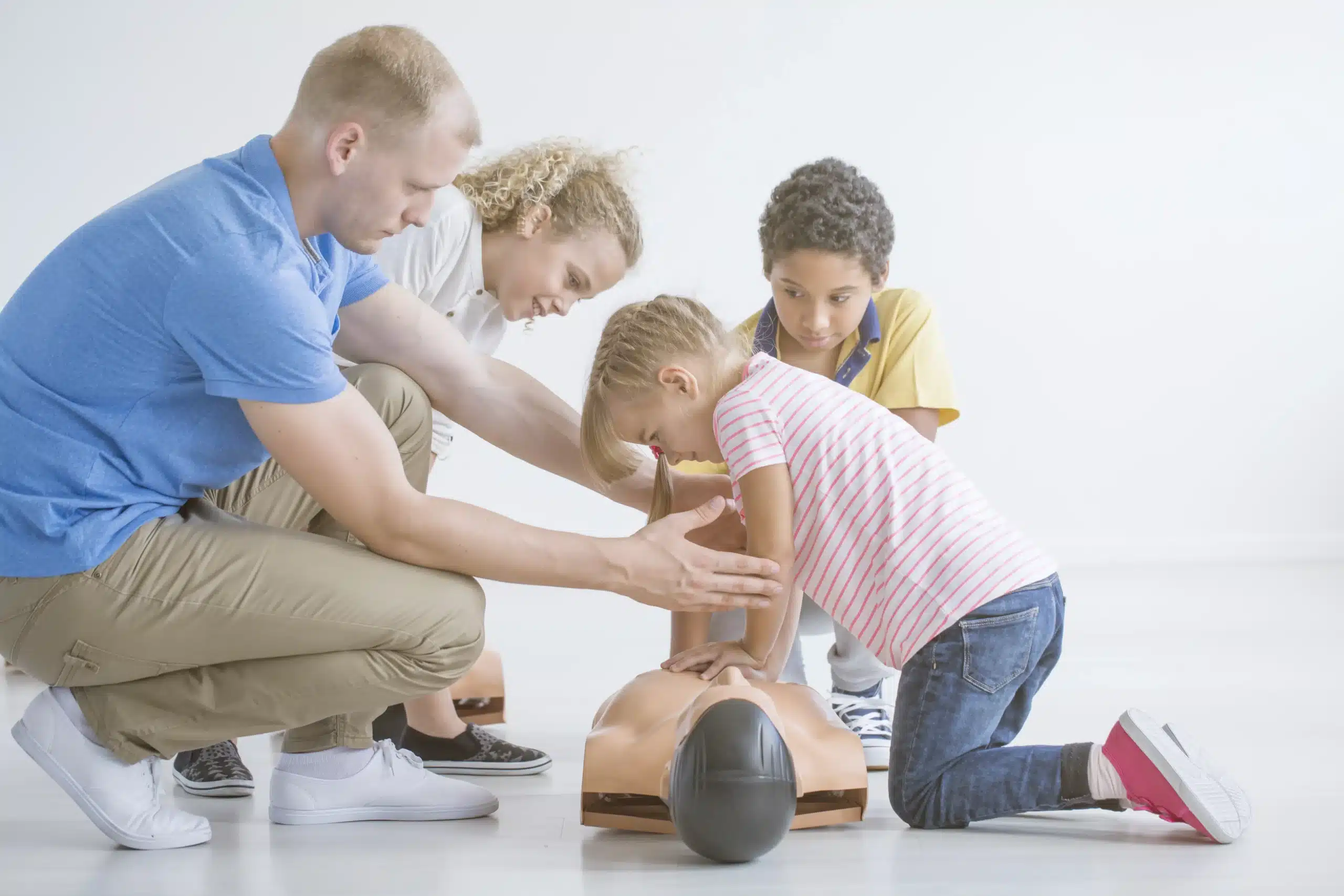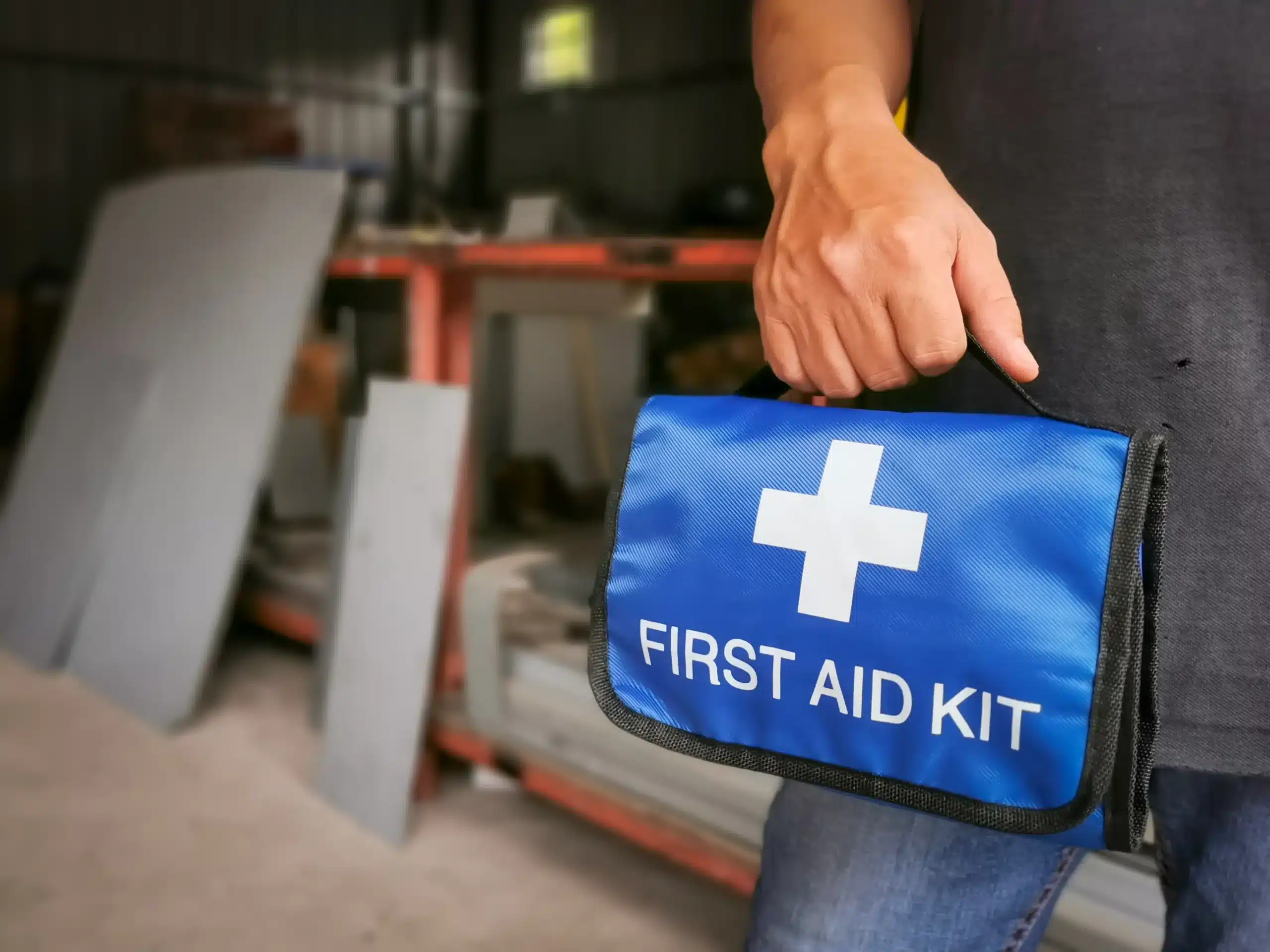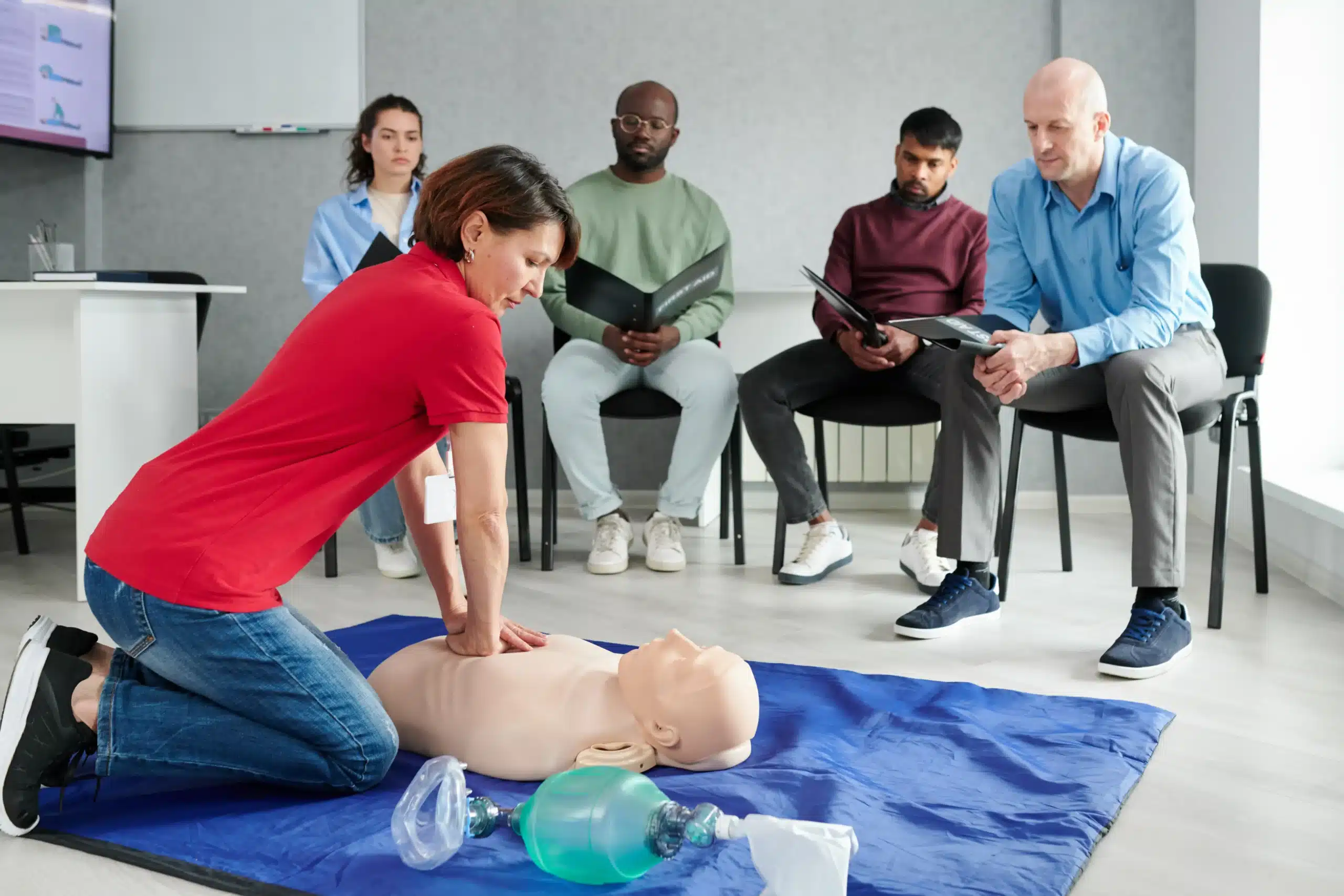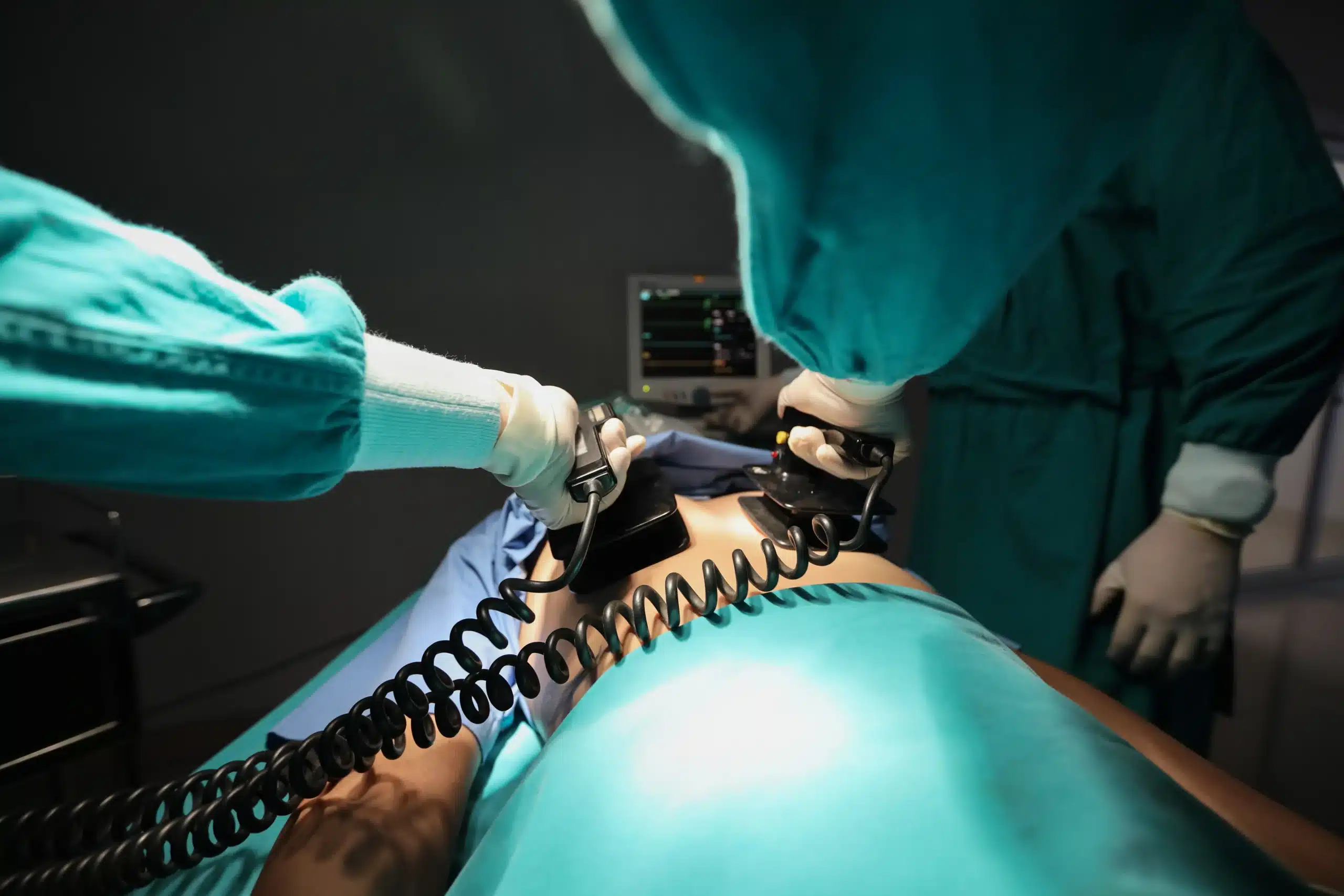Life with kids is unpredictable. One minute they’re happily playing, and the next, they’ve taken a tumble or worse. Being prepared for anything is part of the parenting journey, and knowing pediatric CPR and first aid is a crucial part of that preparedness. This guide will explore the ins and outs of pediatric CPR and first-aid in San Jose, providing you with the information and resources you need to feel confident in any situation. We’ll discuss the specific techniques used in pediatric CPR, where to find certified training in San Jose, and how to choose the right course format for your needs. We’ll also delve into the importance of ongoing training and how to stay up-to-date on the latest recommendations.
Key Takeaways
- Pediatric CPR and first aid empower you to act in emergencies: These skills equip parents, caregivers, and anyone working with children to confidently handle situations like choking, breathing difficulties, and injuries, providing immediate care while waiting for professional medical assistance.
- Choose the right training based on your needs: Consider in-person, online, or blended learning formats, aligning the course with your learning style and schedule. Look for certified instructors with pediatric experience and ongoing training. Compare prices and explore group discounts to find affordable, high-quality training.
- Stay prepared by regularly refreshing your skills: CPR and first aid certifications often require renewal. Regular practice and refresher courses are crucial for maintaining your skills and confidence. Utilize online resources, community workshops, and practice guides to reinforce your knowledge and ensure you’re always ready to respond effectively.
What is Pediatric CPR and First Aid?
Pediatric CPR and first aid focuses on the specific needs of infants and children during medical emergencies. It equips parents, caregivers, and anyone working with kids with the skills to respond effectively to situations like choking, cardiac arrest, breathing difficulties, and injuries. Knowing these techniques can be crucial until professional medical help arrives. This specialized training provides a sense of preparedness and empowers individuals to act quickly and confidently when a child’s safety is at risk.
Why Parents and Caregivers Need Training
As a parent or caregiver, you’re the first line of defense in a child’s emergency. CPR training gives you the tools to respond effectively in such critical moments. Think of it as an essential addition to your parenting toolkit—one that could make all the difference. While you hope you’ll never need it, having this training offers immense peace of mind. It’s a sobering fact that many parents report they wouldn’t feel confident responding to a medical emergency involving their child. Equipping yourself with these skills can transform you from a bystander to a potential lifesaver. CPR training for parents is more than just a good idea—it’s a crucial skill that empowers you to protect the children you care for.
How Pediatric CPR Differs from Adult CPR
Pediatric CPR differs significantly from adult CPR because of children’s smaller size and developing physiology. Techniques are adapted to accommodate these differences, ensuring appropriate care. For example, the force and depth of compressions are modified for a child’s delicate chest. Pediatric first aid also recognizes the importance of emotional support for both the child and their caregiver during a stressful event. Understanding these distinctions is key to providing effective and safe care in a pediatric emergency. Pediatric first aid emphasizes a gentle approach combined with precise techniques tailored to a child’s unique needs.
Addressing Common CPR Myths
Several myths surround CPR training, often creating unnecessary hesitation. One common misconception is the fear of causing further harm by performing CPR incorrectly. While proper technique is essential, even imperfect CPR is better than no CPR. Another myth revolves around the necessity of mouth-to-mouth resuscitation. In many cases, chest compressions alone can be effective. It’s important to address these CPR myths to encourage more people to seek out this life-saving skill. Dispelling these misconceptions can empower individuals to act confidently in emergencies, knowing that any attempt to help is valuable.
Where to Find Pediatric CPR & First Aid Training in San Jose
Finding the right pediatric CPR and first aid class can feel overwhelming, but several reputable organizations and training centers in San Jose offer these essential courses. Here are a few places to start your search:
Safety Training Seminars
Safety Training Seminars offers American Heart Association (AHA) certified classes in CPR, BLS, ACLS, PALS, and First Aid. They’re committed to providing convenient schedules and low prices in Santa Clara County, with two-year certifications. Located in Sunnyvale, they serve Sunnyvale, Santa Clara, and San Jose. Check their website for course schedules and group discounts.
American Red Cross
The American Red Cross offers a variety of CPR and first aid courses in San Jose, including options for parents and caregivers. They offer in-person classes and blended learning, which combines online coursework with in-person skills sessions. Explore their website to find a class that fits your needs.
American Heart Association
While the AHA doesn’t directly teach classes, they develop the standards for CPR training. You can find AHA-certified courses through various providers, including Safety Training Seminars, which offers training based on the latest AHA guidelines. This ensures you receive high-quality instruction and a recognized certification.
Emergency and Health Training Center
The Emergency and Health Training Center in San Jose provides AHA-compliant CPR and first aid training. They emphasize hands-on learning and aim to create a fun, engaging experience. Their focus on affordability makes them a good option for families.
Stanford Children’s Health
While not a CPR training provider, Stanford Children’s Health emphasizes the importance of pediatric first aid and CPR training. They offer resources and information on child safety, explaining why these skills are so important. You can find helpful articles and tips on their website related to emergency preparedness.
Choosing the Right Course Format
Deciding on the right CPR and first aid course format depends on your learning style, schedule, and preferences. Let’s explore the most common options: in-person, online, and blended learning. We’ll also discuss class size and duration so you can find the perfect fit.
In-Person Training
In-person training offers hands-on practice and personalized instruction. You’ll work directly with a certified instructor, practicing skills in real-time and receiving immediate feedback. This direct interaction is invaluable for mastering life-saving techniques like CPR. For parents, especially, the confidence gained from in-person CPR training can be incredibly reassuring.
Online Courses
Online courses offer flexibility for busy schedules. Learn at your own pace, revisiting materials as needed. These courses often include interactive modules and videos demonstrating essential CPR and first aid techniques. While convenient, online learning may not provide the same level of hands-on practice as in-person training. Online CPR guides can offer more insights into this format.
Blended Learning
Blended learning combines online coursework with an in-person skills session. This approach allows you to study the theoretical material at your convenience and then practice those skills with a certified instructor. Blended learning offers the flexibility of online study combined with the essential hands-on component of in-person training. The Red Cross also provides blended learning CPR classes.
Class Size & Duration
Class sizes are typically kept small to ensure personalized attention and ample opportunity for hands-on practice. This creates a more comfortable learning environment where you can ask questions and receive individual guidance. Most CPR and first aid courses are designed to be completed within a few hours, making them manageable even for busy parents. Check with your chosen provider for specific class size and duration details.
Understanding Training Costs & Value
Knowing the price of life-saving skills helps you budget effectively. This section breaks down typical costs, highlights potential savings, and directs you to valuable resources for CPR and First Aid training in San Jose and surrounding areas like Sunnyvale and Santa Clara.
Typical Price Ranges
CPR and First Aid training in San Jose comes at various price points. The cost typically depends on the certification level and the organization providing the instruction. For example, the American Red Cross offers a range of CPR and First Aid classes—in-person and blended learning—giving you choices to fit your schedule and budget. Comparing what each course includes is worthwhile to find the best fit.
Group Discounts & Promotions
Learning with a group? Ask about discounts. Many training centers offer reduced rates for group registrations. The American Heart Association often highlights the benefits of hands-on, group training, making it an affordable and enjoyable option for families or friend groups learning together. Check with your preferred training center about their group discount policies. This can be a great way to save money and learn with people you know.
Safety Training Seminars’ Low Price Guarantee
Safety Training Seminars believes in providing affordable, high-quality training. We’re committed to competitive prices for our American Heart Association (AHA) certified classes in CPR, BLS, ACLS, PALS, and First Aid. Our low price guarantee ensures you receive comprehensive training without overspending, making these essential skills accessible to all. We proudly serve Sunnyvale, Santa Clara, and San Jose.
Free Community CPR Workshops
Free CPR training options are sometimes available within the community. The Red Cross sometimes offers free community CPR workshops, often through their Schools Program. This provides free training for students when teachers and administrators also participate, a valuable resource for parents focused on their children’s safety. It’s always a good idea to check for these valuable community programs.
Evaluating Instructor Qualifications
Finding the right Pediatric CPR and First Aid class is a big decision. It’s not just about learning the skills—it’s about feeling confident you can use them in a real emergency. That’s why carefully evaluating instructor qualifications is so important. A well-trained instructor can significantly impact how prepared you feel to handle a pediatric emergency.
Certification Requirements
First, check those certifications. Any qualified instructor should hold current certification from a nationally recognized organization, such as the American Heart Association or the American Red Cross. This demonstrates they’ve met established standards and possess the fundamental knowledge to teach these life-saving skills. CPR training is often a job requirement, and choosing a certified instructor ensures you receive high-quality instruction that meets professional standards. You can usually find this information on the training center’s website or by contacting them directly.
Ongoing Instructor Education
Pediatric emergency care is a constantly evolving field. Best practices change, new research emerges, and techniques are refined. Therefore, it’s essential to find instructors dedicated to ongoing education. Ask about their continuing education practices. Do they regularly attend refresher courses and stay informed about the latest guidelines? Instructors who prioritize staying current can offer the most relevant and effective training, giving you the most up-to-date knowledge and techniques for handling pediatric emergencies. This commitment to continuous learning means better preparedness for you as a parent or caregiver.
Pediatric Emergency Care Expertise
General first aid and CPR knowledge is valuable, but pediatric emergencies often demand a specialized approach. Look for instructors with a solid background in pediatric care. This might include experience working with children in a healthcare setting, specialized pediatric certifications, or extensive experience teaching pediatric CPR and first aid. This focused expertise offers valuable insights and practical tips specifically for infants and children. It also ensures they can address your particular questions and concerns about caring for a child in a medical emergency. Developing these specialized skills will give you the confidence to respond effectively in various situations, protecting the children in your care.
Learn Essential Skills & Benefit from Training
Knowing how to respond to a medical emergency involving a child can feel overwhelming. Pediatric CPR and first-aid training equips you with the skills to act quickly and confidently when a child’s health is at stake. Let’s explore some of the essential skills you’ll gain.
Infant & Child CPR Techniques
CPR for infants and children differs from adult CPR in both technique and the force used. You’ll learn how to assess a child’s responsiveness, deliver age-appropriate chest compressions and rescue breaths, and how to modify techniques for infants versus older children. These pediatric CPR techniques are crucial for maintaining oxygen flow to the brain and other vital organs until professional help arrives.
Choking Response & Injury Management
Choking emergencies can happen quickly, especially with young children. Training provides the skills to recognize the signs of choking in different age groups and how to perform appropriate choking rescue procedures. Quick action in these situations can prevent further harm and promote faster healing. You’ll also learn basic first-aid techniques for managing common childhood injuries like cuts, burns, and sprains. For more comprehensive information, explore resources on pediatric first aid.
Recognizing Medical Emergencies
Beyond CPR and first aid, training helps you recognize the signs of other medical emergencies in children, such as allergic reactions, seizures, and breathing difficulties. Knowing how to identify these situations and when to call 911 can make a significant difference in a child’s outcome. CPR training empowers you to respond effectively, providing crucial care in those first few critical minutes.
Build Confidence in Emergency Response
Perhaps one of the greatest benefits of pediatric CPR and first-aid training is the confidence it instills. Knowing you have the skills to handle emergencies can alleviate anxiety and empower you to act decisively when needed. This confidence can be invaluable not only for parents and caregivers but also for anyone who works with children, from teachers and coaches to babysitters and camp counselors. Consider pediatric first aid training to gain peace of mind, knowing you’re prepared to protect the children in your care.
Certification & Continued Learning
Certification Validity & Recertification
After completing your pediatric CPR and first aid training, you’ll receive a certification, often valid for two years. This certification is frequently provided digitally, offering easy access and verification. For instance, the American Red Cross provides digital certificates with unique IDs and QR codes, simplifying verification for employers. Certification periods can vary, so always confirm the specifics of your course. Knowing your certification’s expiration date helps you stay prepared for recertification.
Why Regular Refreshers Matter
CPR and first aid skills are invaluable for parents and caregivers. Regular refreshers are essential, not only to maintain your certification but also to keep your skills sharp. Like any important skill, practice and reinforcement are key. CPR Classes Nashville highlights the importance of CPR training for parents, emphasizing its critical role in emergencies. Staying current with your pediatric first aid knowledge allows you to confidently handle various childhood injuries and illnesses, as explained by MyCPR NOW.
Resources to Maintain Your Skills
Beyond formal recertification courses, many resources can help you maintain your skills. The American Red Cross offers resources like printable guides to help you review essential techniques. Regularly practicing these skills, even outside of a formal class setting, can significantly improve your response time in an emergency. Online videos and tutorials demonstrating proper techniques for infant and child CPR are also readily available.
Community Support & Resources
You’re not alone in prioritizing child safety. Many community organizations and resources in San Jose offer support and additional training. Check with local hospitals, community centers, and parent groups for workshops or refresher courses. These resources can provide valuable support and connect you with other parents and caregivers. Research indicates that community efforts to increase first aid training can help reduce child injury rates. For a comprehensive guide to CPR training in Sunnyvale and surrounding areas, visit Sunnyvale CPR Classes for helpful resources and training options.
Related Articles
- Pediatric CPR & First-Aid Classes in Sunnyvale – Sunnyvale CPR Classes
- CPR Certification in San Jose: A Practical Guide – Sunnyvale CPR Classes
- Debunking Common CPR Myths
- American Heart Association (AHA) Training in San Jose – Sunnyvale CPR Classes
- Online CPR Classes in Sunnyvale: Your Complete Guide – Sunnyvale CPR Classes
Frequently Asked Questions
Is pediatric CPR drastically different from adult CPR? Yes, absolutely. A child’s body is different from an adult’s, so the techniques are modified. You’ll learn gentler compressions and specific methods for infants and children. It’s crucial to learn these differences to provide safe and effective care.
I’m nervous about hurting a child while performing CPR. Is that a valid concern? It’s understandable to feel that way, but remember, any attempt at CPR is better than none. Proper training will teach you the correct techniques, minimizing any risk. Focus on learning the skills well, and your confidence will grow.
Which CPR certification is best? Certifications from nationally recognized organizations like the American Heart Association (AHA) and the American Red Cross are widely accepted. Look for training centers offering courses based on the latest guidelines from either organization. What matters most is finding a reputable provider with qualified instructors.
How much does CPR training typically cost, and are there ways to save? Costs vary depending on the course type and provider. Look for group discounts if you’re learning with friends or family. Some organizations also offer free community CPR workshops, so it’s worth checking for those. Don’t hesitate to contact different providers and compare prices.
How can I make sure my CPR skills stay fresh after I get certified? Regular practice is key. Consider refresher courses or look for online resources and videos that demonstrate proper techniques. Even reviewing the basic steps periodically can make a big difference in your preparedness. Think of it like any other important skill – the more you practice, the more confident you’ll become.
